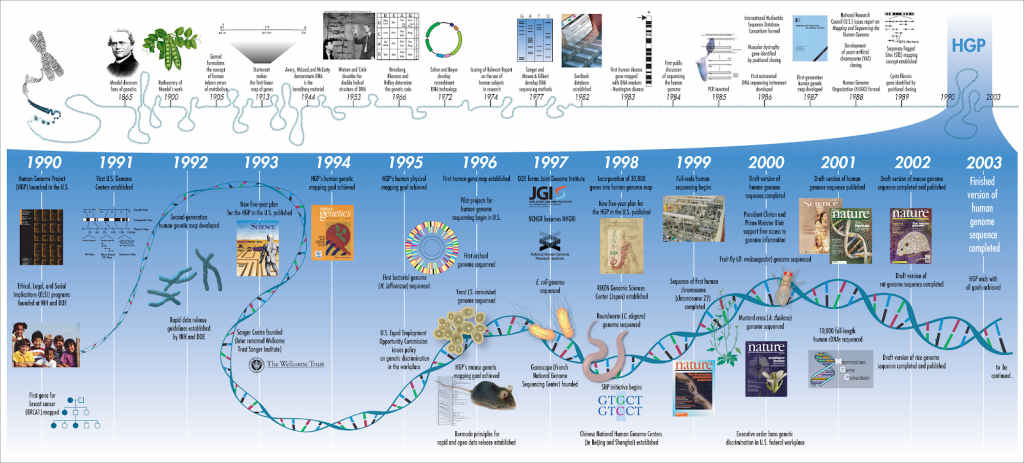By Laetitia Meyrueix
The Human Genome Project (HGP) was an amazing endeavor to map the full human genome. A genome consists of all the DNA of an organism, which represents all the genetic information found in the nucleus of every cell in your body. DNA is made up of base pairs and parts of DNA are defined as genes. Genes are typically known as instructions that code for proteins. The human genome contains 3 billion DNA base pairs of information, which is all needed to build and maintain human beings throughout their lifetime. The HGP was such an intense effort that it required an international team of researchers to work together. The results were first published in February 2001 — about 11 years after the start of the project and about 40 years after Watson and Crick’s discovery of DNA’s structure.
One of the ultimate goals of the HGP was to shed light on human diseases and find the underlying genes causing these health issues. However, the HGP ended up creating more questions than answering them. One thing we found out is that most diseases are complex, meaning that more than one gene is involved in causing the disease. Obesity is one such example of a complex disease. This is in contrast to cystic fibrosis which is a disease caused by a mutation in a single gene and leads to the body producing thick and sticky mucus that can clog the lungs. To further complicate diseases, there are gene and environment interactions to consider. A gene-environment interaction is a situation in which environmental factors affect individuals differently, depending on their genetic information. The possible number of gene-environment interactions involved in complex diseases is daunting, but the HGP has given us the genetic information necessary to start to better understand these interactions.
Although the HGP did not end up giving us all the answers we were looking for, it pointed us in the right direction. The HGP showed us that not all diseases are caused by single mutations and that genetic diversity does not explain the differences in health outcomes. Complex diseases, like obesity, are not fully explained by genetics alone. We need to consider the role of environmental factors on human health and disease in order to better understand complex diseases and to ultimately treat them.
Edited by Sarah Brotman and Manisit Das


